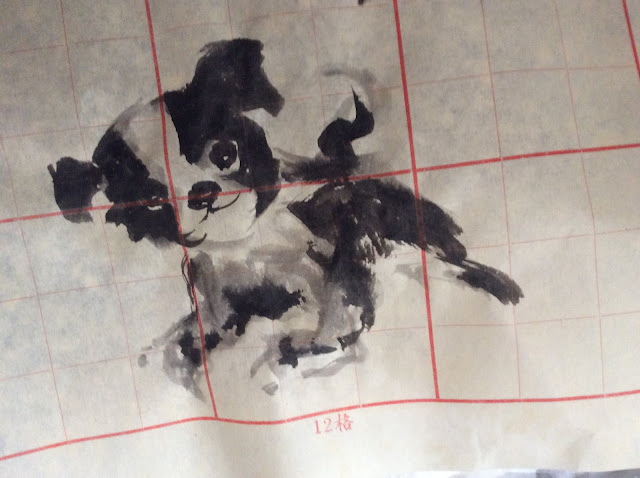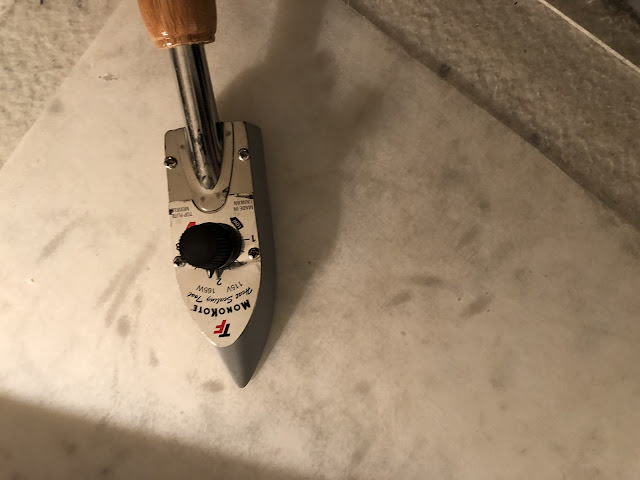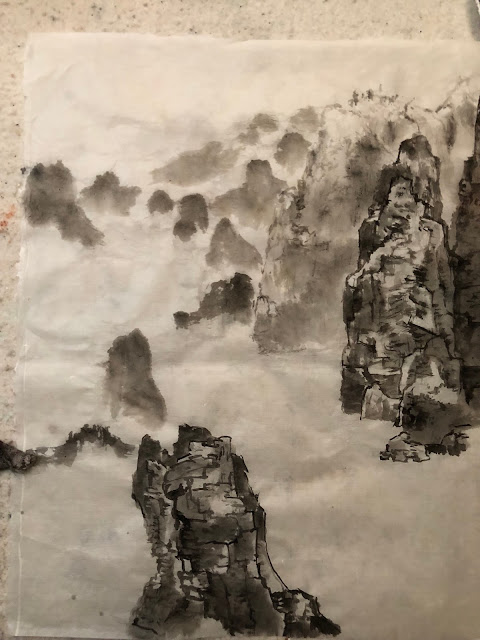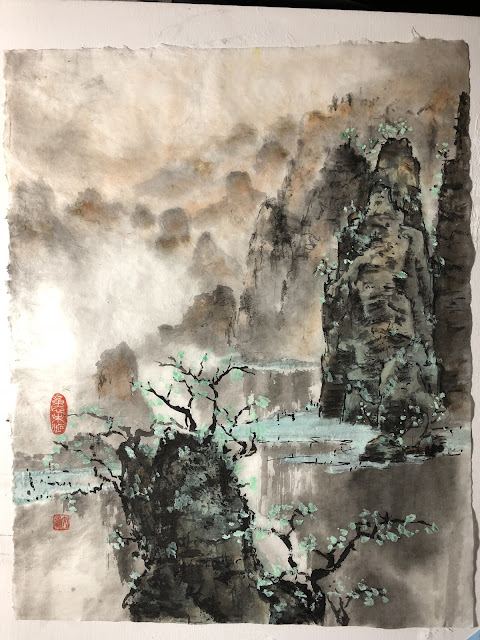What spurred this impetus on was the fact that I was tired of looking at a canvas frame that I made a few years back. This frame has the 2:1 aspect ratio, one that approximates the native ratio for traditional Xuan stock. In a daring move, I decided to mount my pond backdrop on my canvas first before I added to the painting. My reeds in a pond painting did not subscribe to the 2:1 aspect ratio, but I forged ahead anyways. I was not holding any prisoners.
Turned out to be okay. I flipped it upside down and see if that would work
The upside down version did not work. I thought the lines were generic and non-descript enough that I might be able to pull the switch off but I was wrong.
Once the mounting was dried I could see that my mounting was not quite up to snuff this time; there were a lot of creases and wrinkles. I had fortuitously picked a piece of blobs and dots and lines, so my mounting inadequacy blended in unobtrusively.
I thought about painting in some water lilies but I didn't think the petals would blend in with the reeds. Frogs and fish were not "poetic" enough. How about something colorful like a Mandarin duck?
It is cute, bright and placates well potentially with the unsuspecting audience since it fits the stereotype. Perhaps I am over-thinking it but I am desperately determined to circumvent this platitude. Besides I am really not familiar with Mandarin ducks and I rather not paint from pictures of them.
I decided on painting something I know intimately, Canada Geese. Their white chin-band on a black neck and head fits the over-all monochromatic and graphic nuance of the pond painting.
Now that I know what to paint, how to paint the geese became a problem. Normally I would be painting on unmounted Xuan and the paper would offer me its water and color absorbency parameters in full. Once my pond back-drop painting is mounted however, the paper behaves very differently because of the starch backing. Additionally, I don't want to wet the painting too much if I could help it, for fear of disturbing the starched sheets. Wetting will cause separation and new wrinkles on the mounted piece.
I needed to use as dry a brush as possible and minimize going over and repeating my brushstrokes. I decided to rough-in the birds to position them more succinctly, in my mind at least.
Employing a rather dry brush, I proceeded to write in the neck and the beak; trying to be loose and precise at the same time.
Adding in the white chest and underbelly seemed to affirm the presence of the geese.
Tea color fortified with ink was used to paint the body.
I was tempted to leave the painting just like that. It had a sort of simplistic innocence to it. But my pragmatic right brain told me that it looked unfinished. I ruminated on that for a day or two and decided to continue adding to it. Perhaps I would regret my judgment.
So I decided to change a completely glassy pond to one with just a few ripples.
Then it occurred to me that the bright area under the body goes against the logic that this is where the shadow or reflection should go and therefore should be darker. And also, the body looked much bigger from a distance because the light area was perceived to be part of the body.
I picked up my brush and obsequiously put in a darker value, hinting a reflection or shadow of sorts.
I just hope that I didn't suck the life out of this painting by rendering it too "real". I was once told that the two dimensional feel of Chinese brush painting is what make the art form impressionistic. I was told to dispense with minute and trivial details of shadows and reflections and what not. Obviously I am a product of my environment and a lot of western influences show up in my works. I am having a hard enough time debating my allegiance to the traditional or a more contemporary expression; I just pray that I am not obfuscating my own perceptions.































































